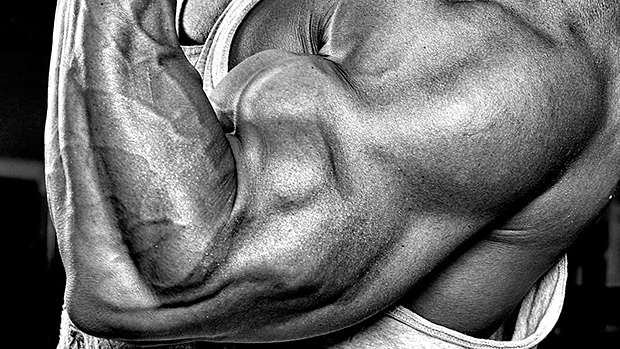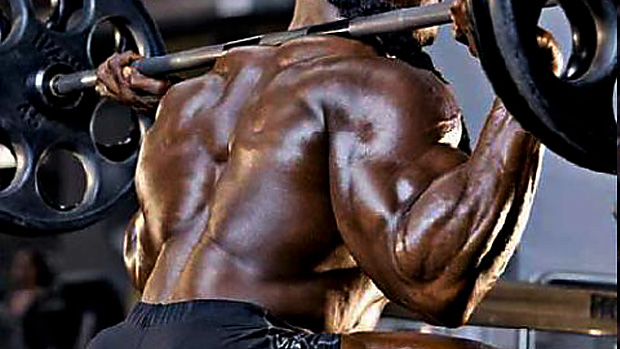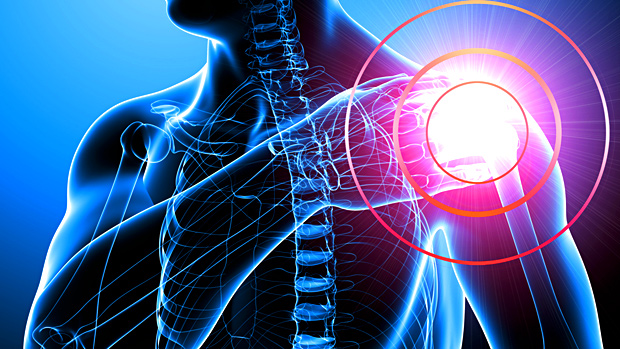Lead photo by Jeremy Blumel
What Is Functional Training?
Squishy balance discs that look like oversized butt implants. Vibrating platforms. A functional training "guru" standing on a BOSU ball while showing off 90 different variations of band work for your hip adducter.
Is that functional training?
No, it's not.
Functional training is currently being misrepresented as some cheesy gimmick where you avoid the weight room and never go above 50 pounds. It's not functional. Instead, it's the pussification of training.
Given that the term functional has been hijacked, beat up, and left for dead in a gutter, let's replace it with the term purposeful.
Purposeful training uses exercises and training programs geared towards getting you better for a specific purpose. Purpose should be the only thing that guides your training; everything else is nothing but opinions and dogma. Find your purpose and attack it.
True functional training, or as we agreed, purposeful training, can make you move better, feel better, and perform better in life while still allowing for progression and an assault on a higher deadlift max.
Functional/purposeful doesn't have to mean soft; it just means the right exercise for the right person at the right time.
The following exercises will make you bigger, stronger, faster, and healthier. They'll improve your sex life and your work life. If you're beat up from years of squats, deads, and benches, they'll recalibrate your system and keep you moving forward.
They'll help you function better in every aspect of your physical life, and that's truly what functional training was supposed to be about. Even if you did nothing else in the gym, just doing these five movements would put you head and shoulders above most lifters, physique-wise and "functionality" wise.
Do them and do them often.
The deadlift is a crowd favorite, but oftentimes physical limitations prohibit people from executing it effectively.
Enter the trap bar deadlift. It provides all of the benefits of deadlifting along with the ability to alter levers and adjust form to use the lift effectively, without the same risks and barriers associated with regular deadlifting.
This exercise is a key component of training with purpose, allowing us the maximum benefit of a deadlift within the confines of what our goal is -- performance, aesthetics, and/or general health.
For those who've been straight-bar deadlifting for a while now, spending some time with an alternative movement will help to break up the overuse injuries associated with long-term exposure to a single movement.
This doesn't make you weak and it doesn't slow you down. Instead, it extends your training life.
Want an easy warm-up to get ready to lift, run, throw, or just move better in general? Look no further than a classic bear crawl.
Bear crawls allow us to work on the motor patterns we use when sprinting while also challenging the core, shoulders and hips to stabilize the body.
Normal warm-ups often fall short when you're trying to get ready to bust your butt in the gym, but an exercise like a bear crawl can have a lot of benefits, especially for one that only takes 1-2 minutes of work.
Try doing 3 sets of 20 yards. Try them with dumbbells in your hands. See how long it takes you to work up to holding 100-pounds in each hand.
The bilateral deficit is a real thing. If you're unfamiliar with it, the idea is that the amount you're able to lift on either limb is greater than when the two are combined.
In other words, you might be able to do a single-leg Romanian deadlift with 235 pounds for 3 reps but only do a normal, two-legged RDL with 405 for 3 reps.
If each leg were truly half as strong as two legs, you'd be able to do 470 pounds (235 x 2) for 3 reps instead of just 405.
Single-leg training promotes greater muscle-growth and greater muscle strength because it works more muscles. And it doesn't just work prime movers, but stabilizers and neutralizers, too.
Regardless of all that, if you run, play sports, or move recreationally, then it's important that you hop on one leg and start getting better.
Being able to do a push-up should be part of your annual physical with a doctor.
Beyond that, if you want to preserve your shoulder health over the long term, it makes no sense to stay strictly on the barbell. Outside of the extra loads needed to train, a barbell tends to beat the joints up to a greater degree than push-ups, regardless of the weight.
Yet much like pull-ups, solid push-ups done with load allow for normal movement of your shoulder and scapula while still challenging your chest. As an added bonus you're forcing your core to get stronger in the process.
Before barbells there were push-ups. This is the exercise that has stood the test of time. Work it in and enjoy the benefits.
Try 3 sets of 12, using a weighted vest or, if you're lucky enough to have them, chains.
Grab and go.
The farmer's walk has become a staple exercise for training the core to deal with real force in motion, while also just being brutal to execute.
Another exercise with tremendous bang for your buck, farmer's walks provide an overload to the traps, core, hips, and grip, as well as the cardiovascular system. Doing them will build stronger movement, improve fat loss, and increase strength in a "functional" way.
See how much you can carry for maximum distance... twice.





